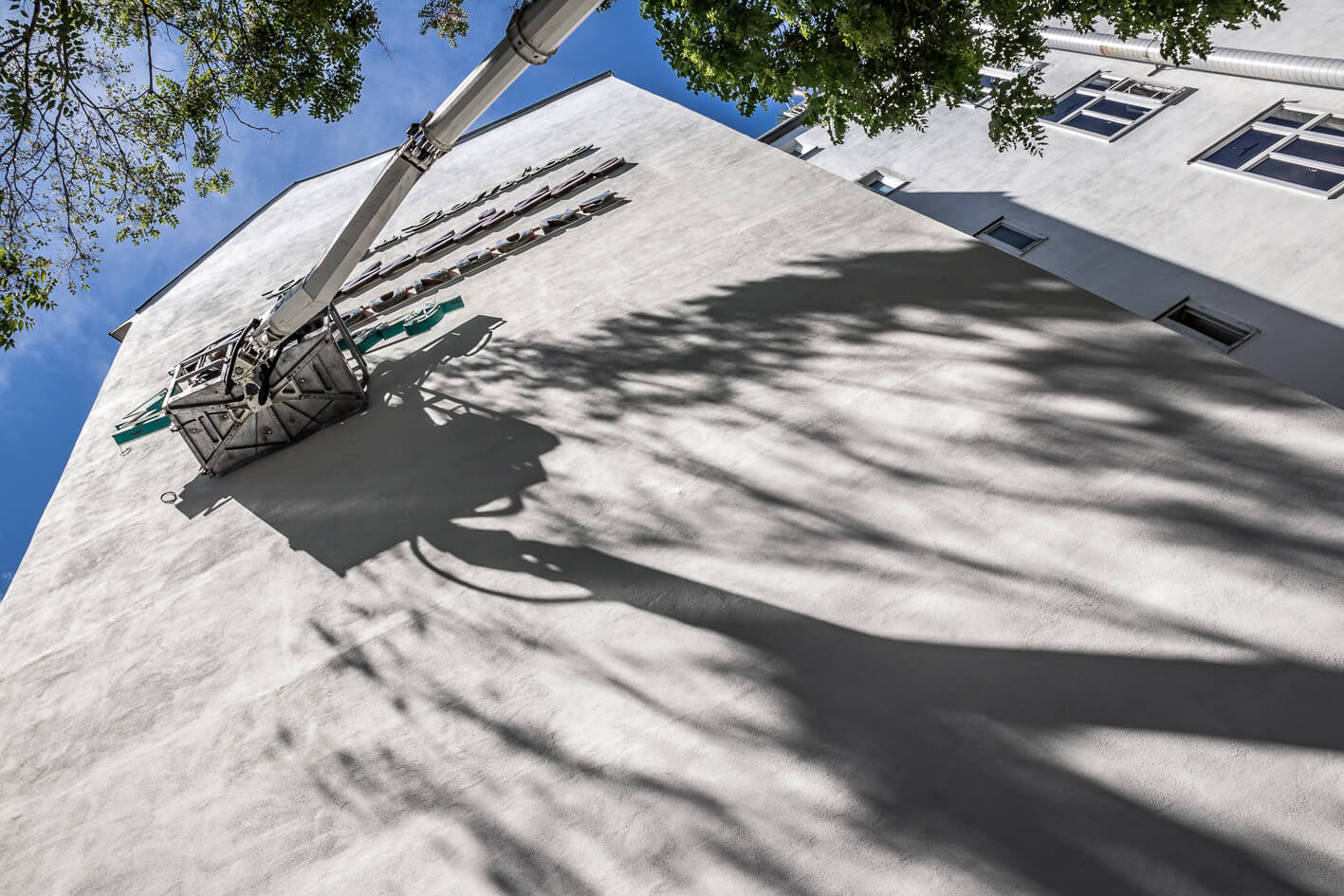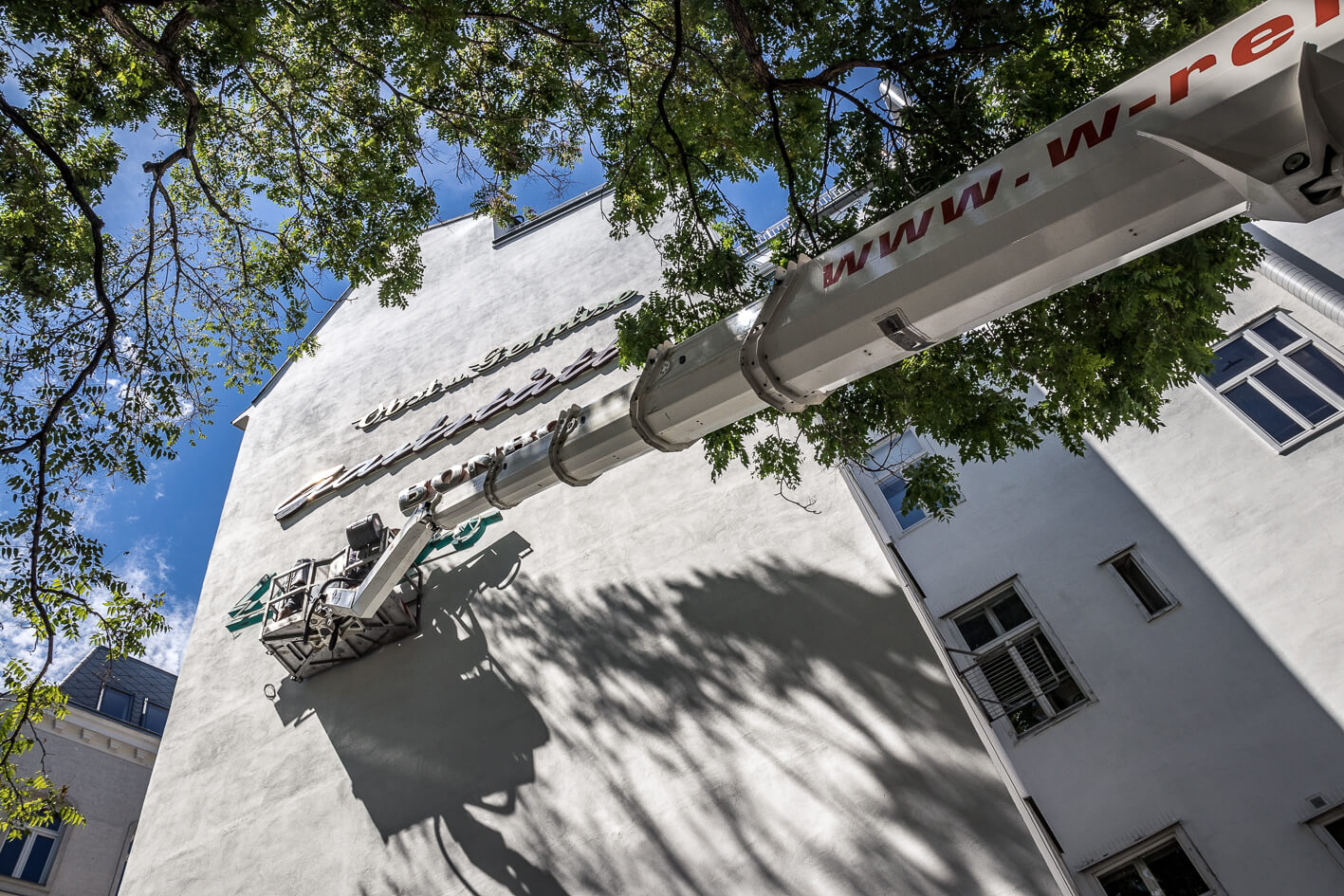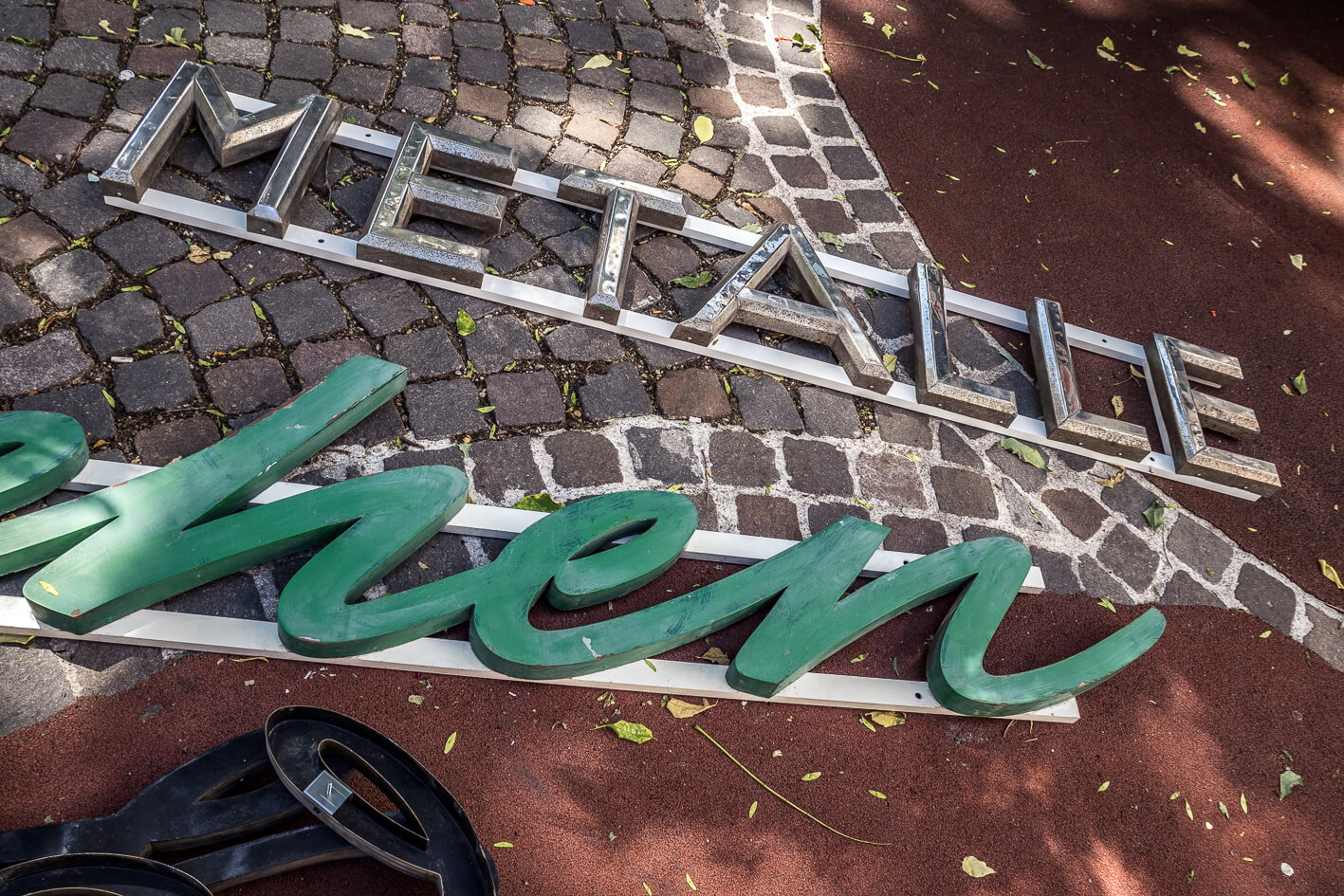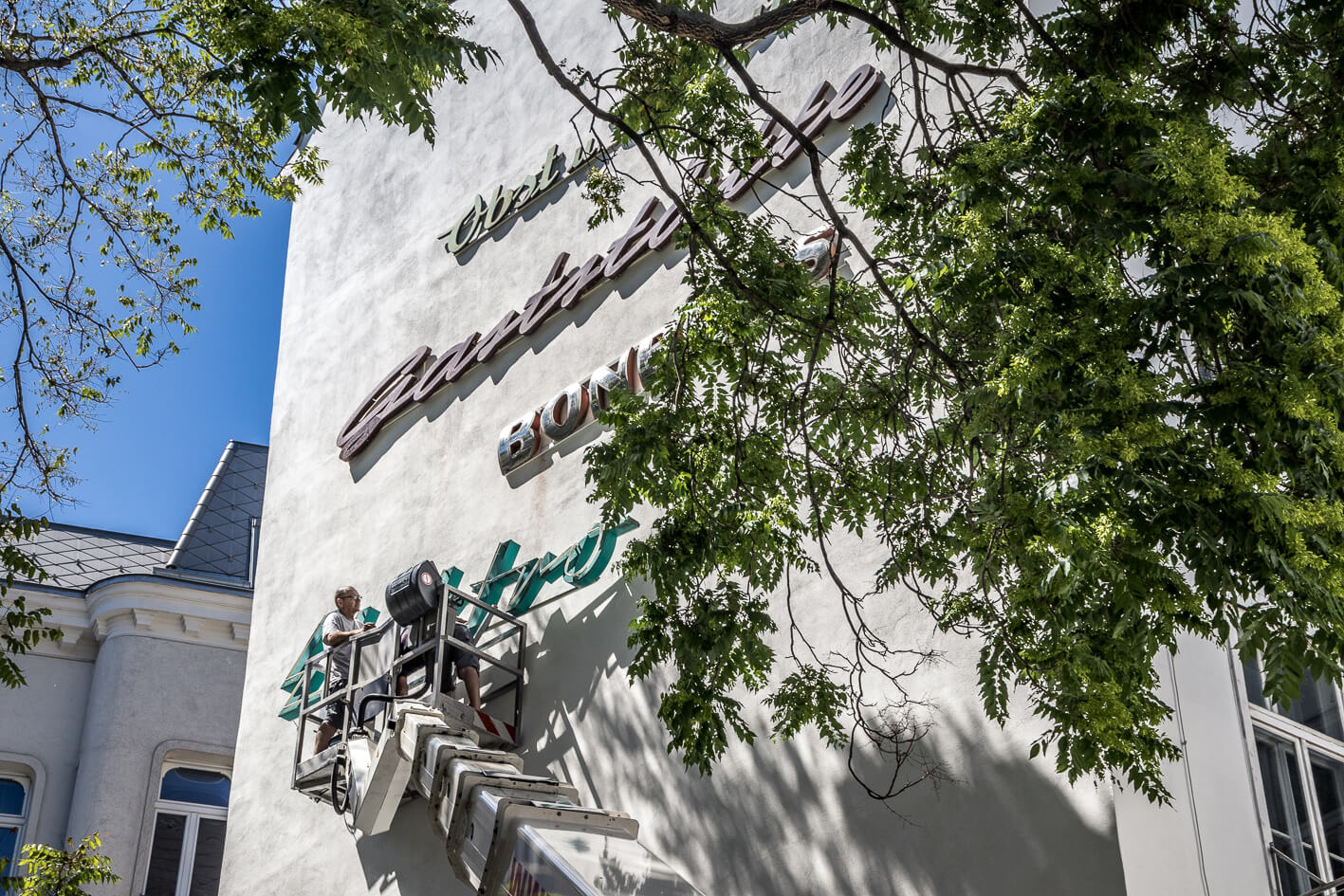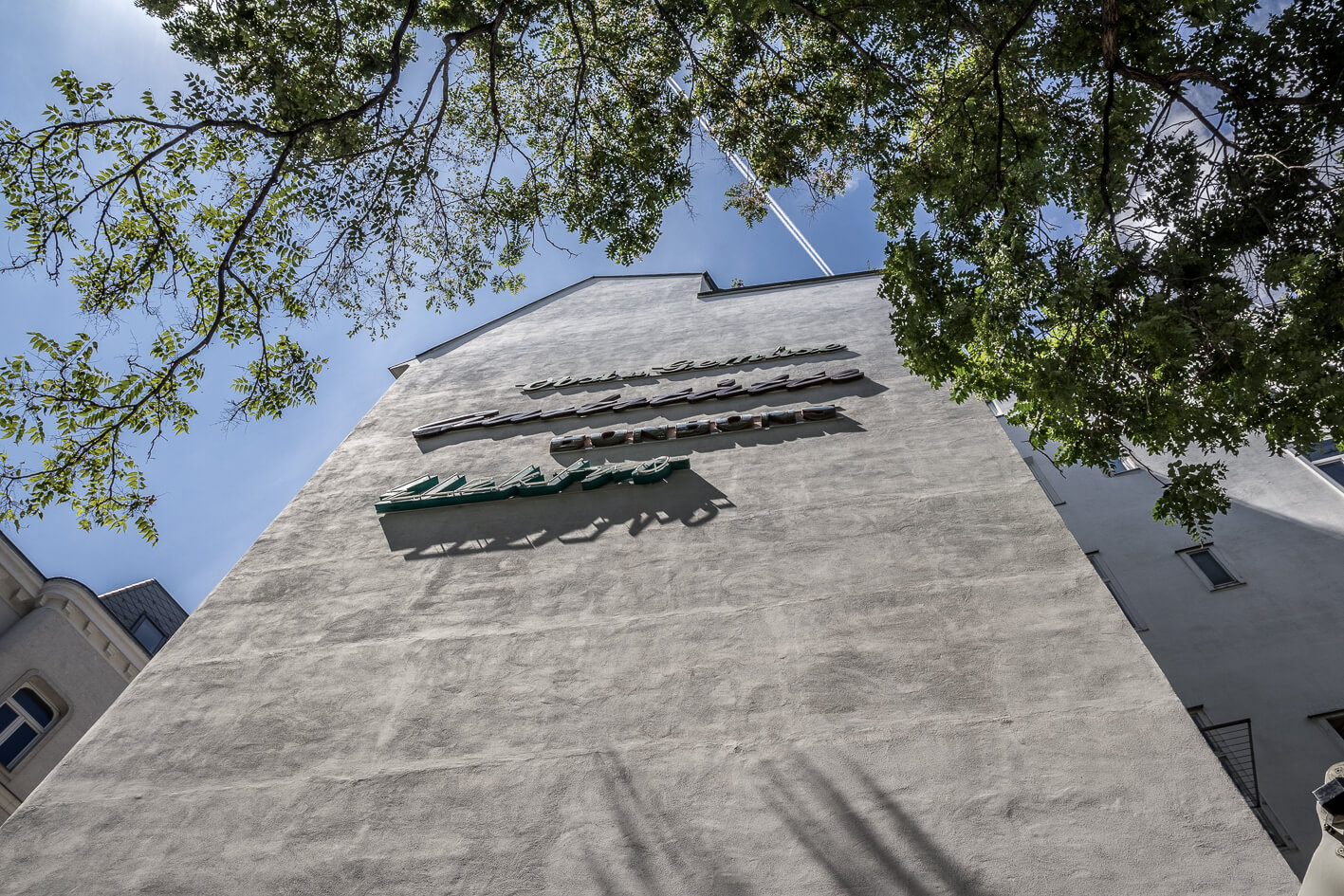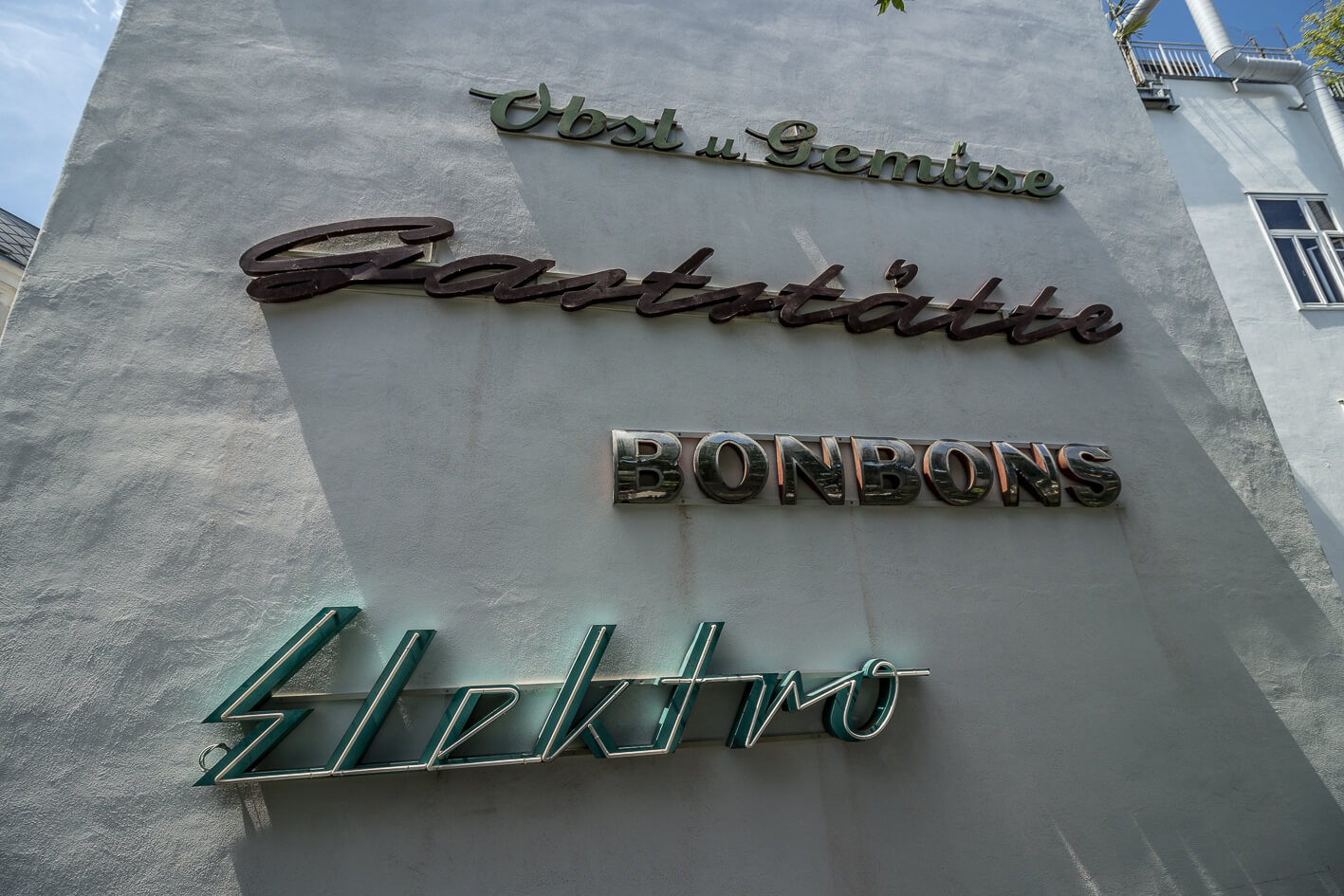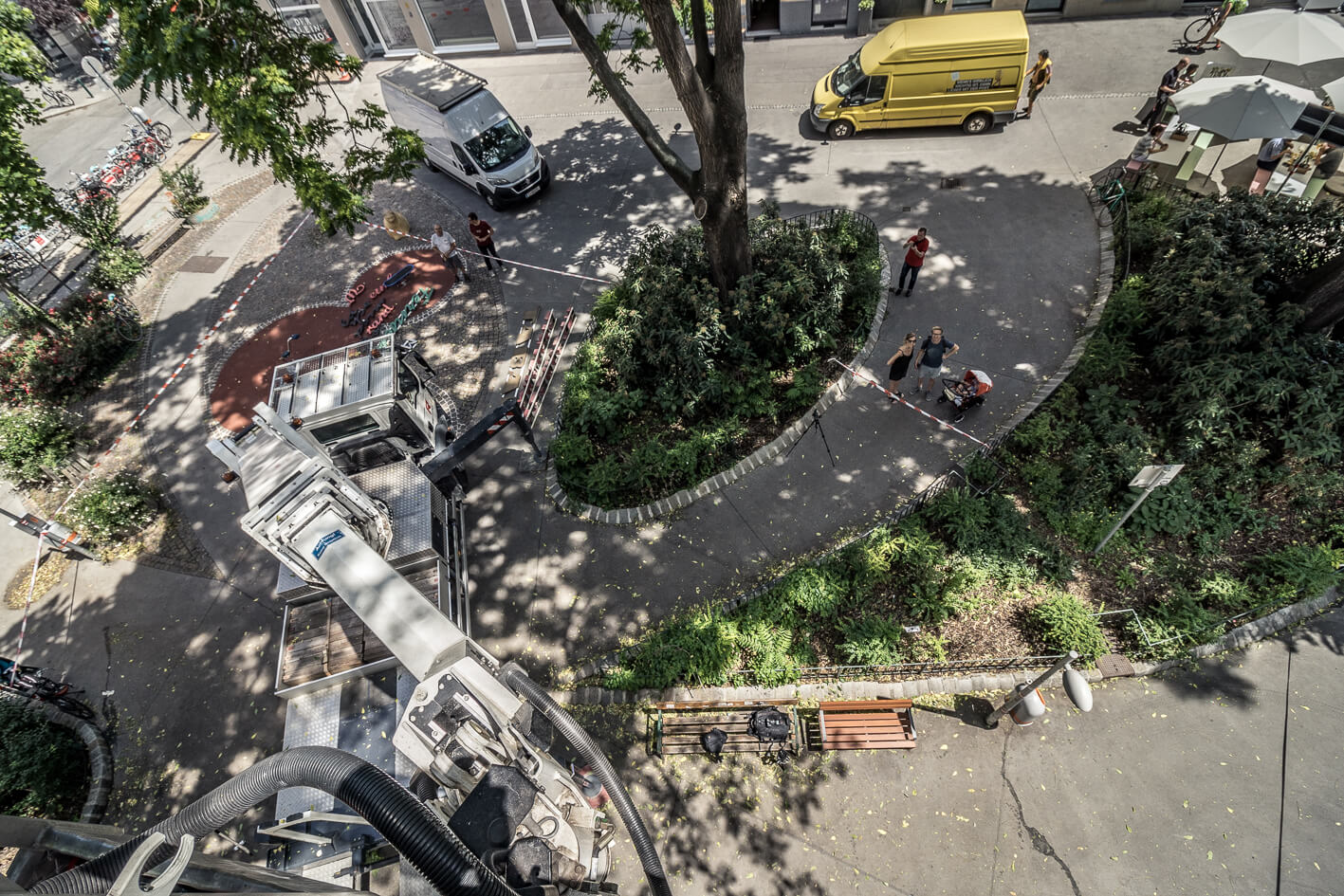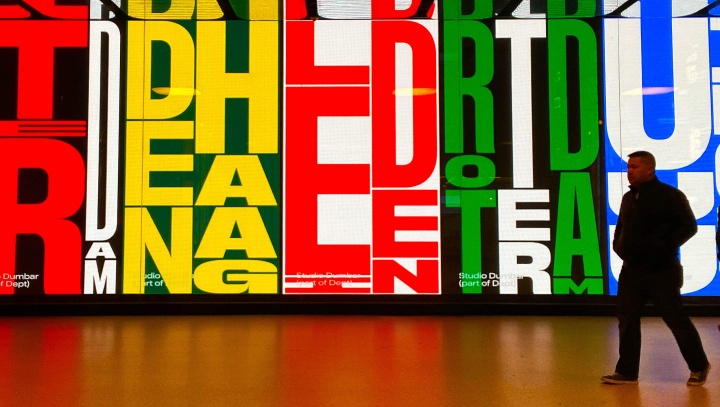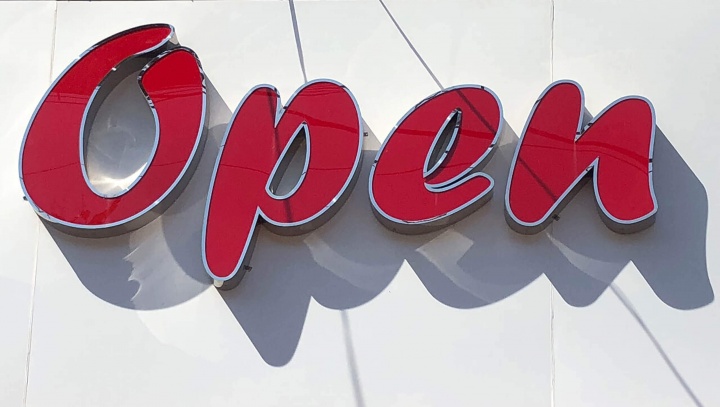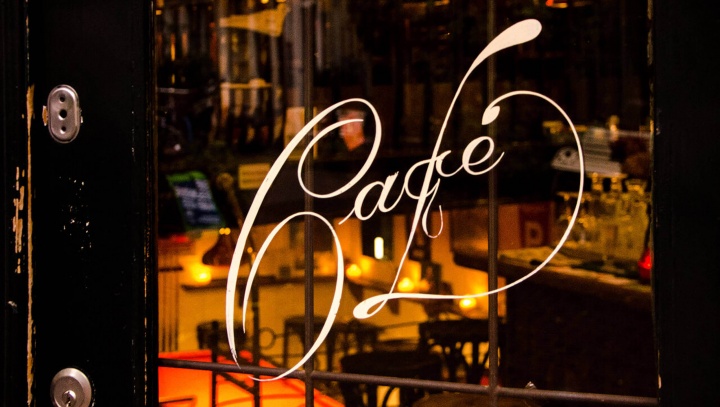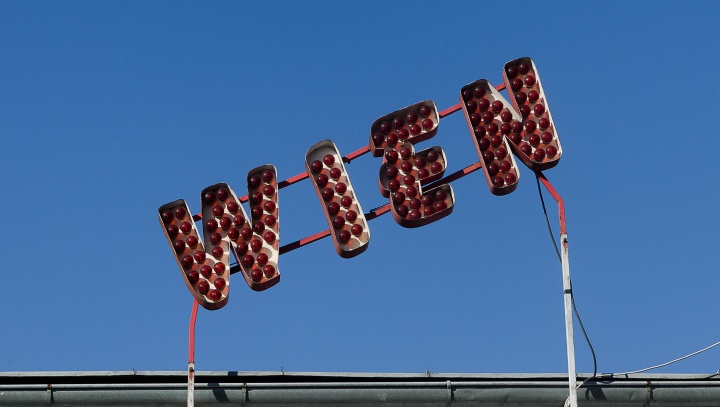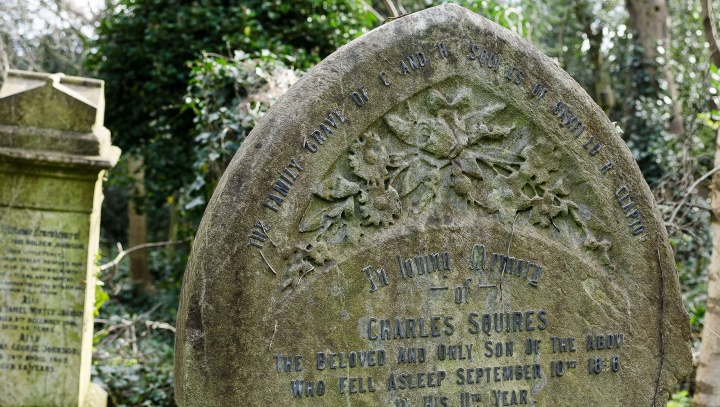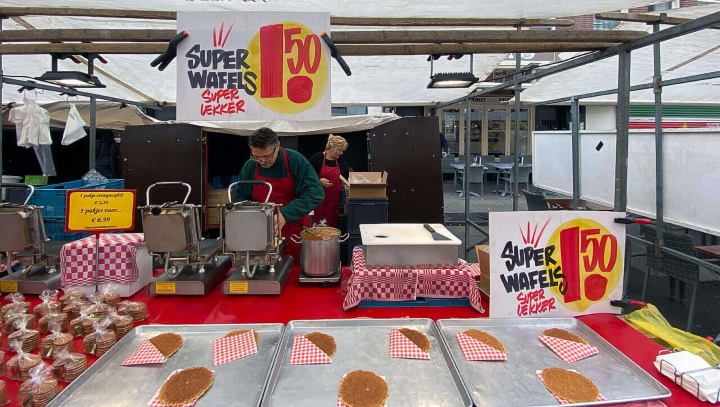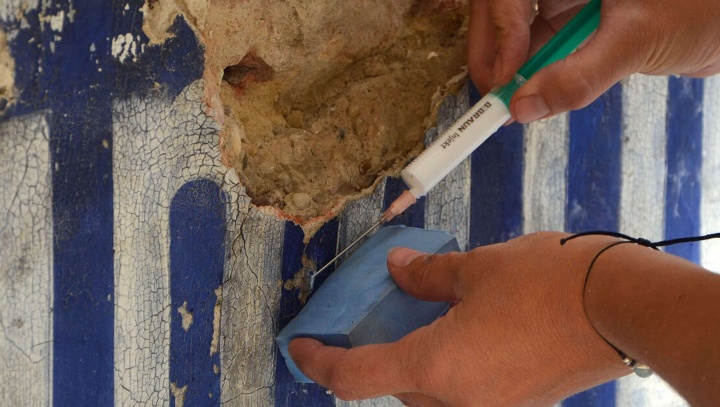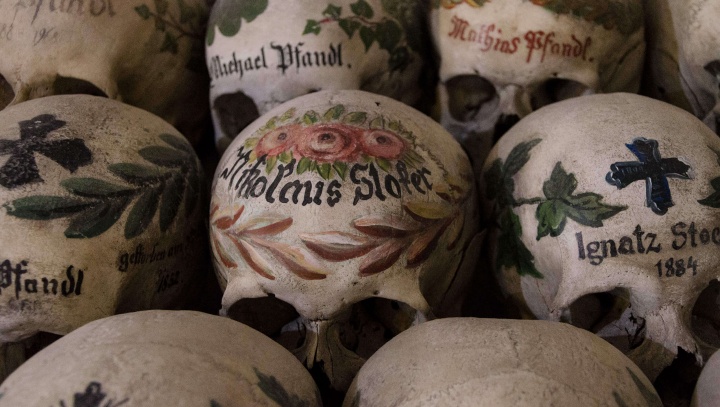Mauer! Schau!
The typographic DNA of the city
Letterings with character
Video: Stephan Doleschal
Unique format
Just like in their “first life” at the business portals. Passers-by who pass them daily will probably not even notice them after a while. Just as they did not notice the lettering of that “small shop around the corner” – until one day it was closed forever.
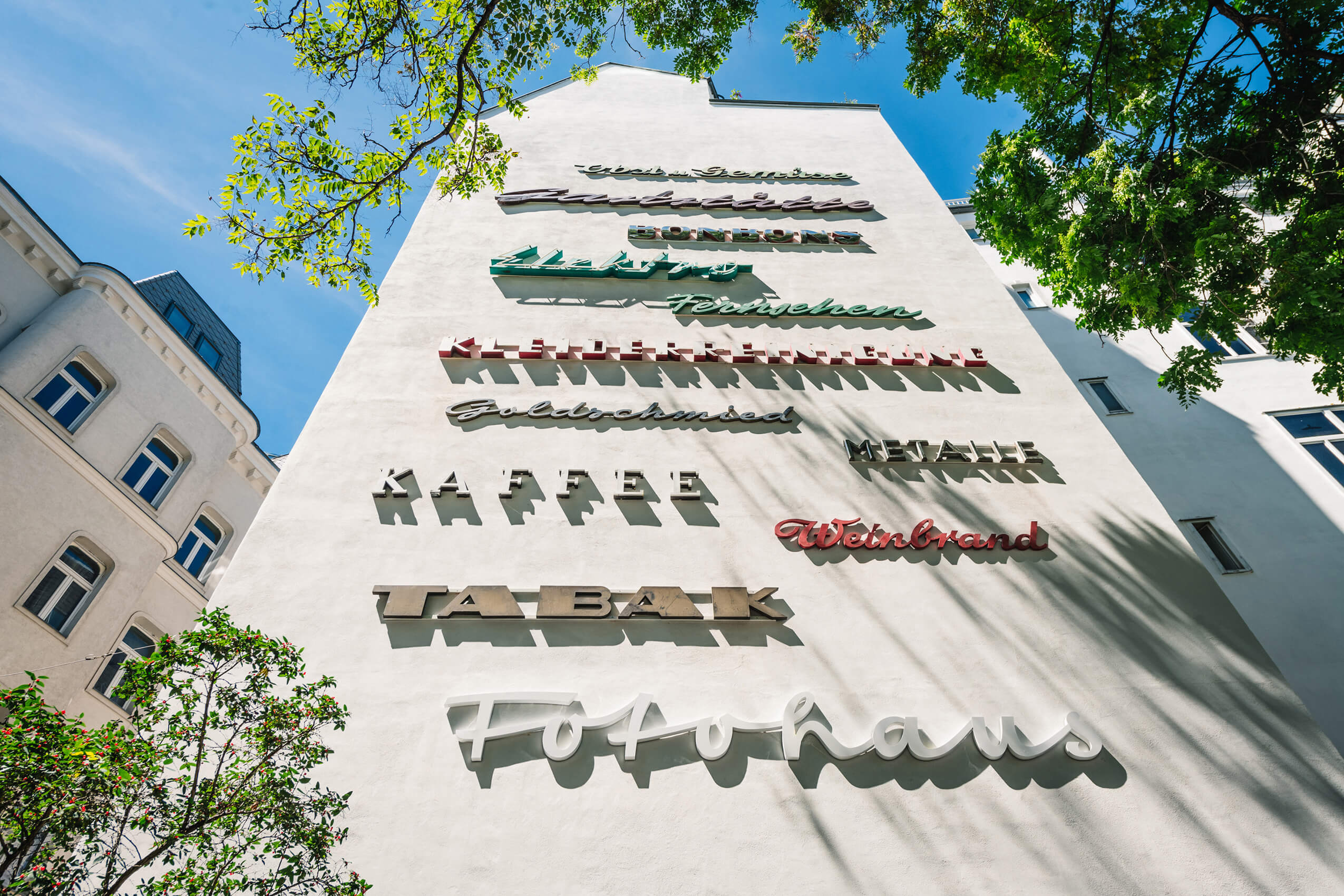 Mauerschau at Ludwig-Hirsch-Platz, © Klaus Pichler
Mauerschau at Ludwig-Hirsch-Platz, © Klaus Pichler
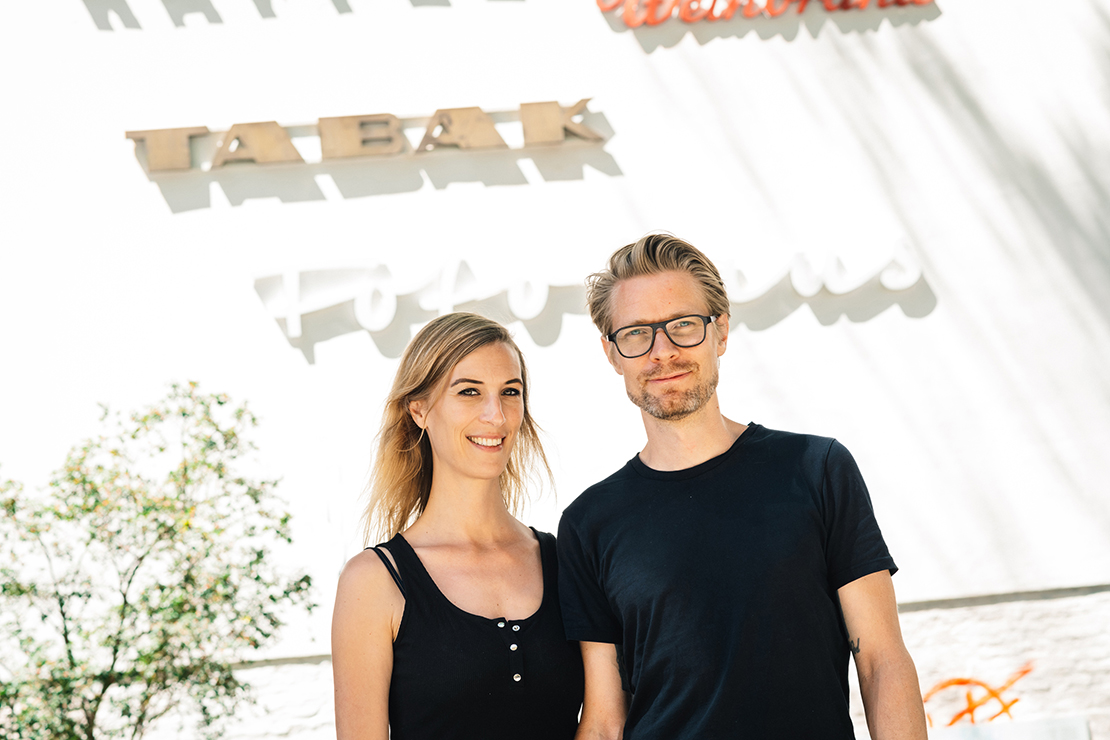 Birgit Ecker and Roland Hörmann from the Stadtschrift association, © Klaus Pichler
Birgit Ecker and Roland Hörmann from the Stadtschrift association, © Klaus PichlerIn any case, there would be enough lettering for such a wall.
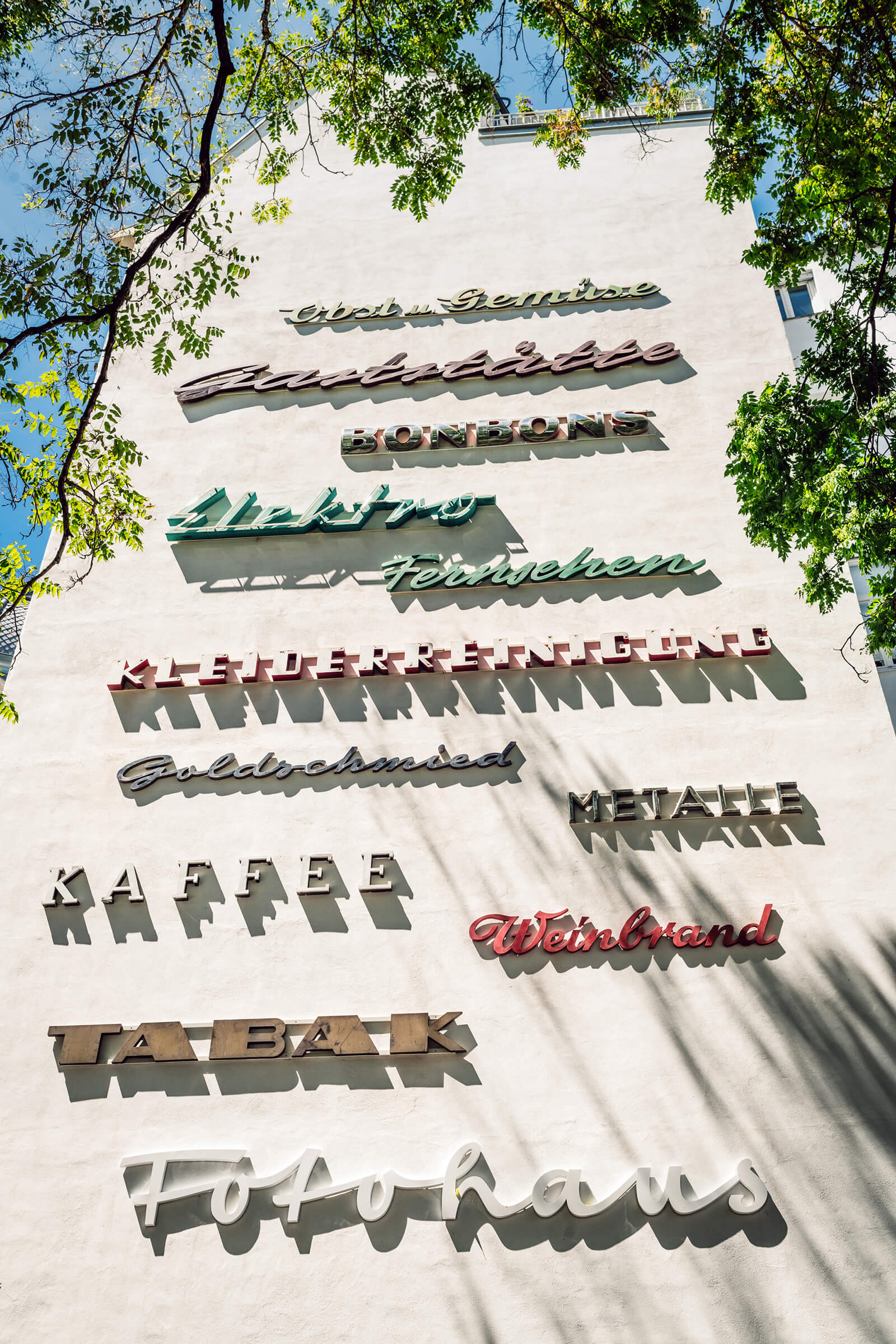
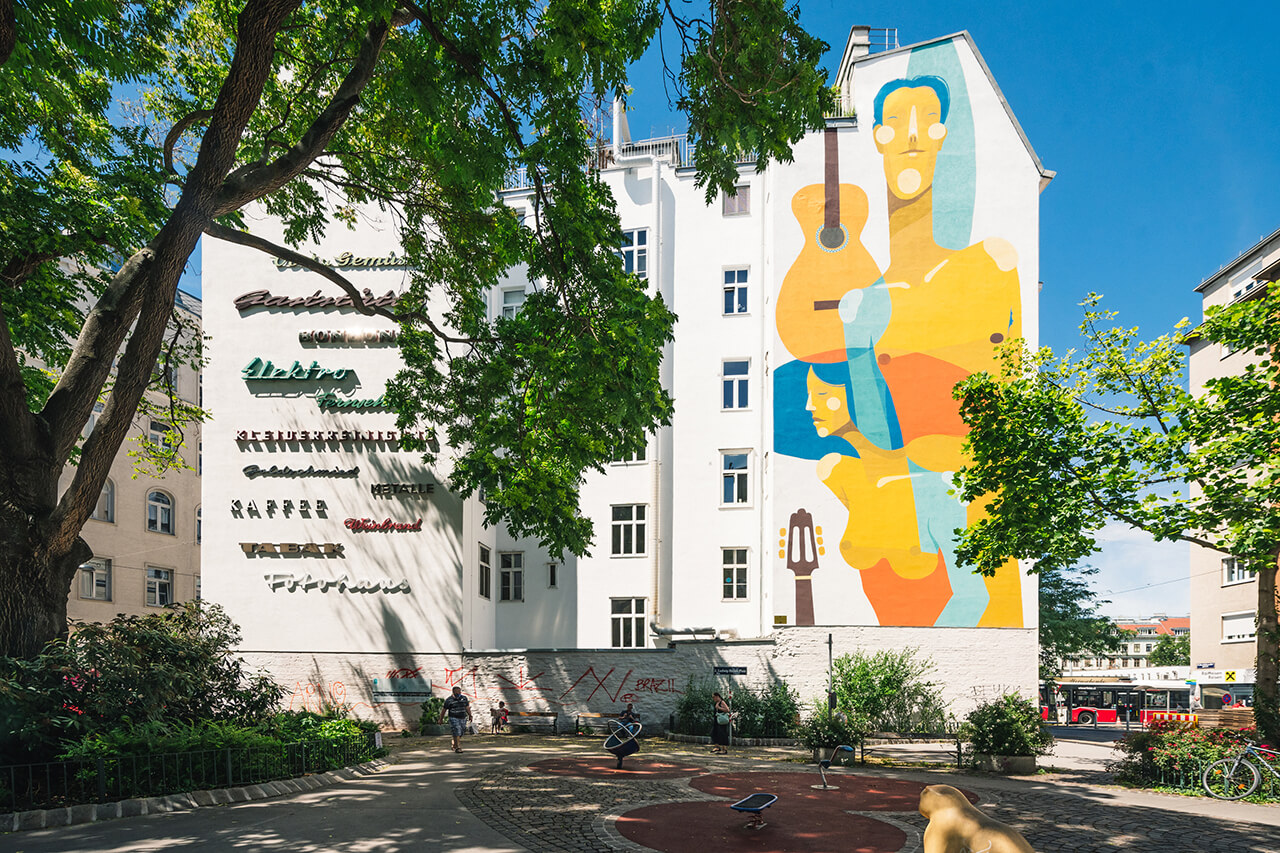 Mauerschau at Ludwig-Hirsch-Platz, © Klaus Pichler
Mauerschau at Ludwig-Hirsch-Platz, © Klaus Pichler
The stories behind the facades
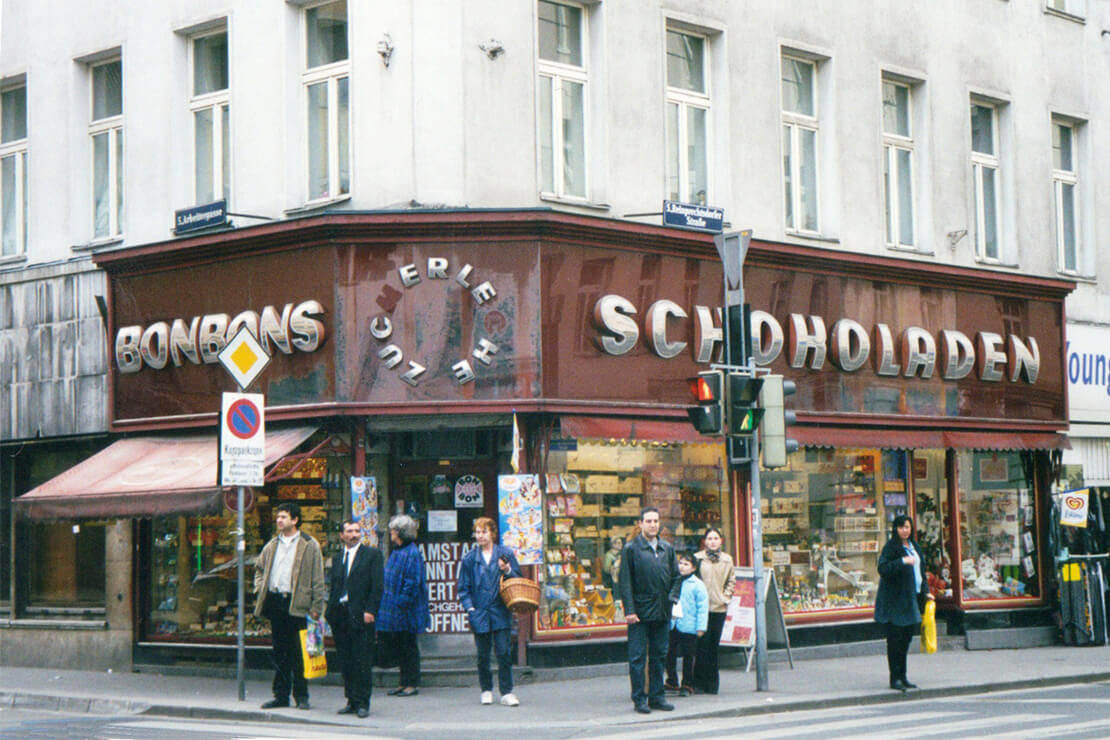
Bonbons, 2001, © Martin Maly
Bonbons
5., Reinprechtsdorfer Strasse 39Dismantled 2005
The shop windows lavishly decorated, the smell when opening the door unforgettable: Candy stores were the ultimate childhood dream and often tactically cleverly located in the vicinity of cinemas or theatres. The Zuckerlecke no longer exists since 2005. By the time it closed, the “chocolate” was already incomplete, because letters on glass panels were not drilled but glued – which may last surprisingly long, but not forever. The lettering was probably produced by the company Körner & Kloss (1897-2002), which had a patent on this type of mirrored and cambered letters until the 1950s. In a handful of originally preserved candy shops, one can still embark on sweet time travel in Vienna.
Elektro
16., Hasnerstraße 59Dismantled April 21, 2012
The “Elektro Heyhall” was one of the first font rescues of the association Stadtschrift and had already been shining for four years at their first wall exhibition. The futuristic lettering installed by the Ronovsky company in 1964, especially the lightning “E”, is a typographic homage to electrification. The neon installation was maintained by the employees themselves. Until the mid-1980s it was open six days a week, after that the premises were used as a warehouse. The company still exists to this day.
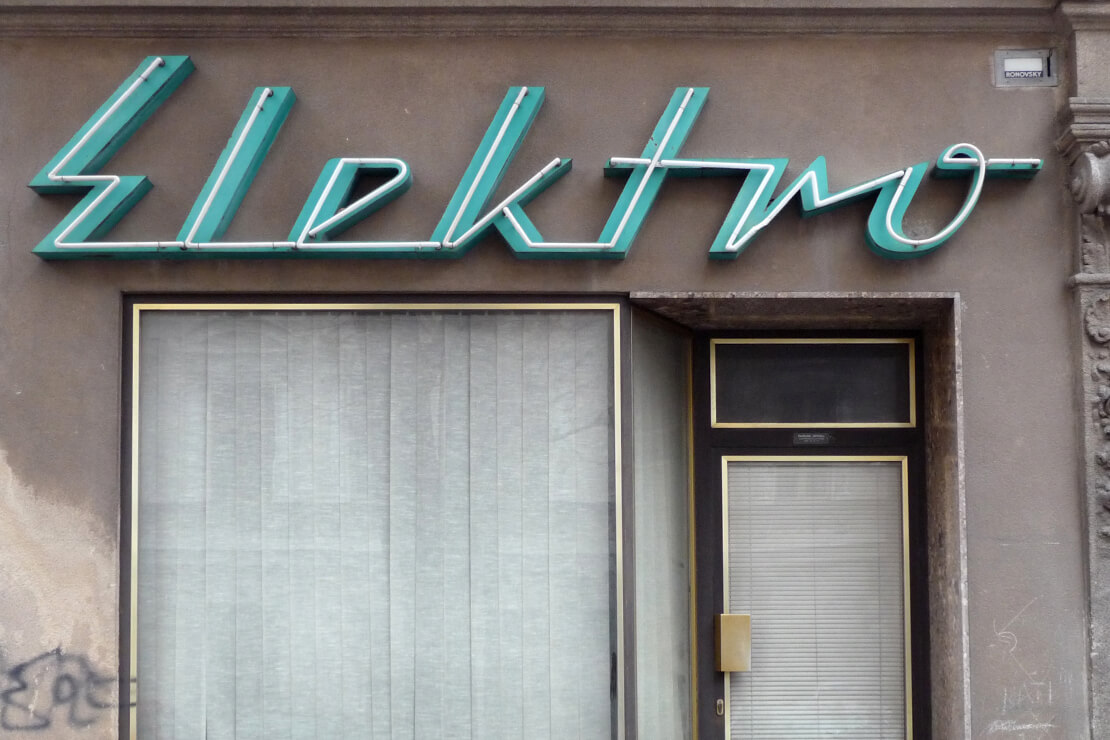
Elektro, 2009, © Stadtschrift
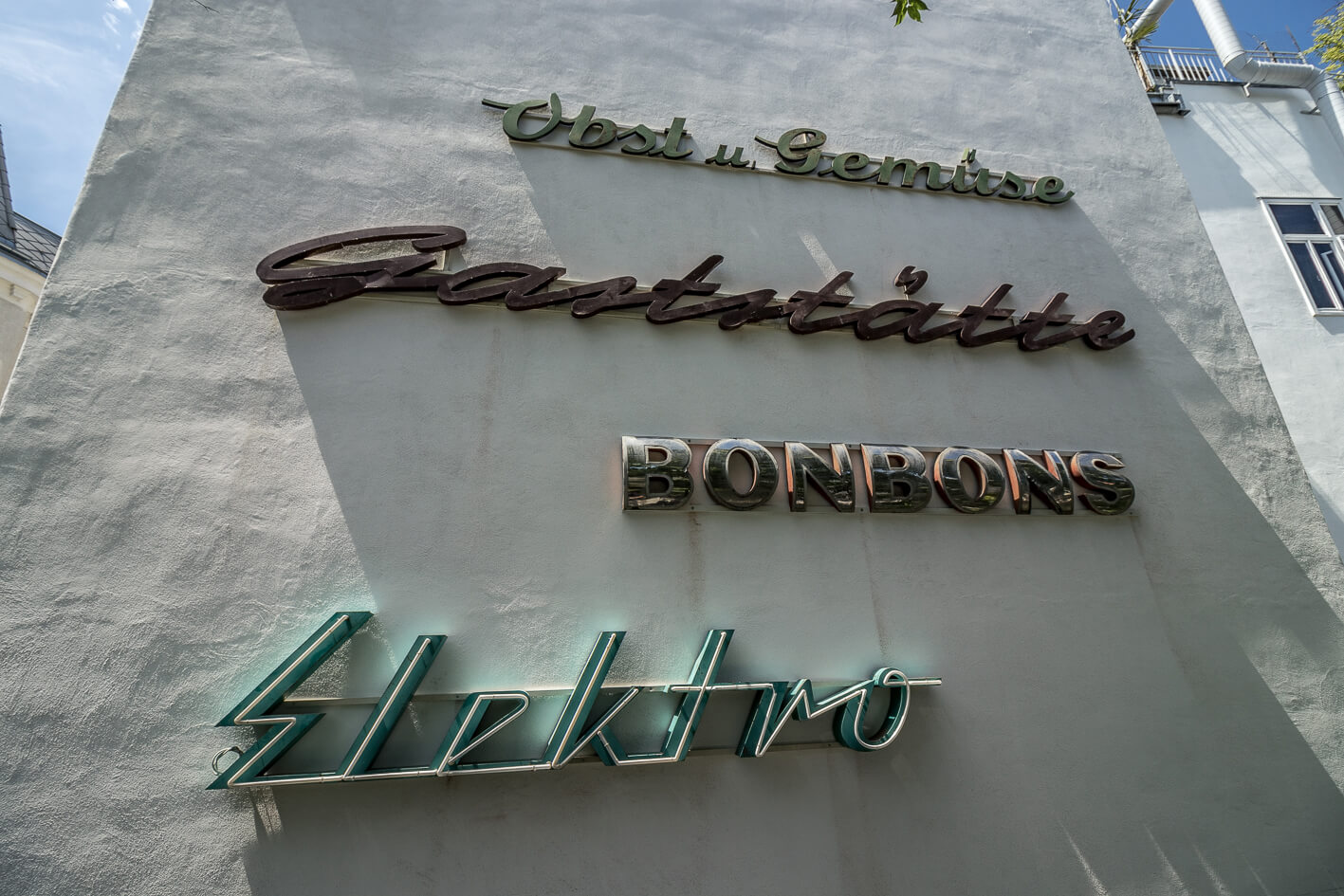
Already shone for four years at the first wall exhibition: the “Elektro” neon sign from Hasnerstrasse 59, © Stephan Doleschal
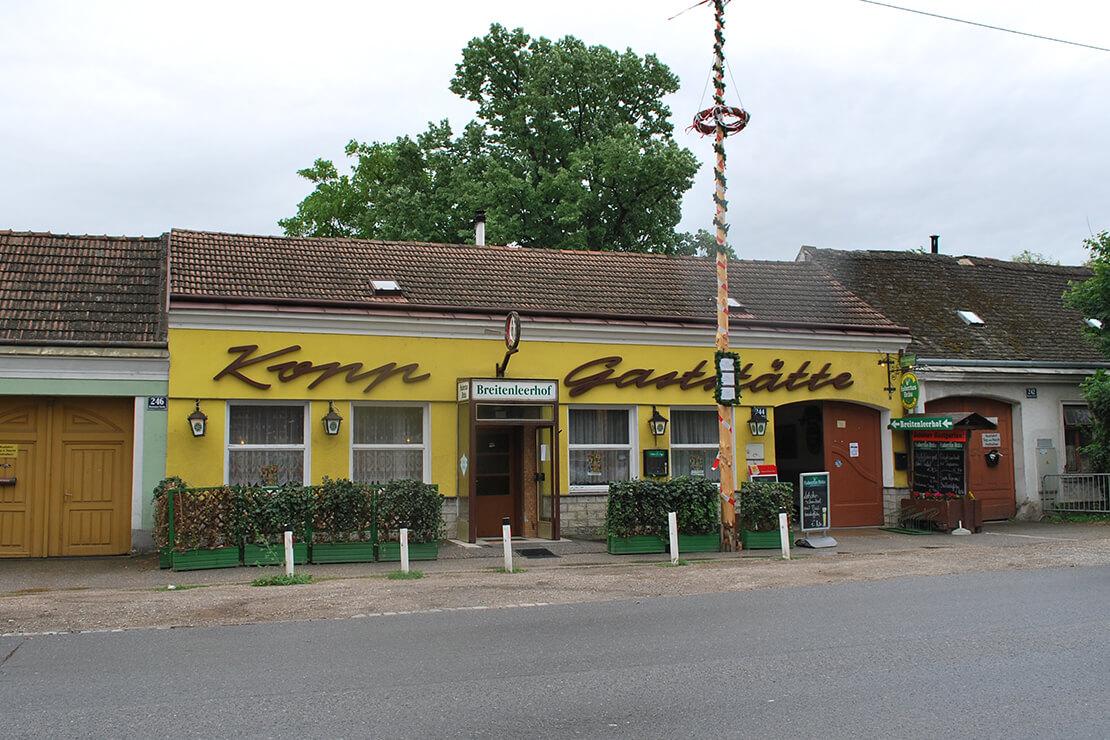 Gaststätte, 2012, © Anna Barbieri & Anna Hagen
Gaststätte, 2012, © Anna Barbieri & Anna HagenGaststätte
22., Breitenleer Straße 244Dismantled April 15, 2014
In the last few years, several traditional taverns in Vienna had to close, so that the district newspaper spoke of a “dying out of taverns”. Another affected pub was the “Gaststätte Kopp”, since 1997 better known as “Breitenleerhof”. The elongated area of the inn, which has existed since the 1880s, was purchased by the housing association for private employees in 2013. Rental apartments were built on the property in several parts, the existing beautiful ballroom was preserved. Efforts were made to reinstall the original lettering after the reconstruction, but due to its wide extension no suitable location could be found. A characteristic feature of this lettering is its yielding baseline – it seems to evade the archway at the end of the word.
Kaffee
3., Radetzkystraße 24Dismatled March 2, 2016
When Hubert Horky took over the café from his mother in 1964, the location already looked back on a long tradition. The mockery of its owner and the furniture, which remained unchanged until the end, made Kaffee Urania one of the most unique places in town. In January 2016 it was closed, a little later Horky died. The signage, with neon tubes on the entrance side and unlit letters around the corner, dates from 1964. The second part of the design, the Muse Urania, has its home on the “female name wall” in the Hofmühlgasse in the 6th district.
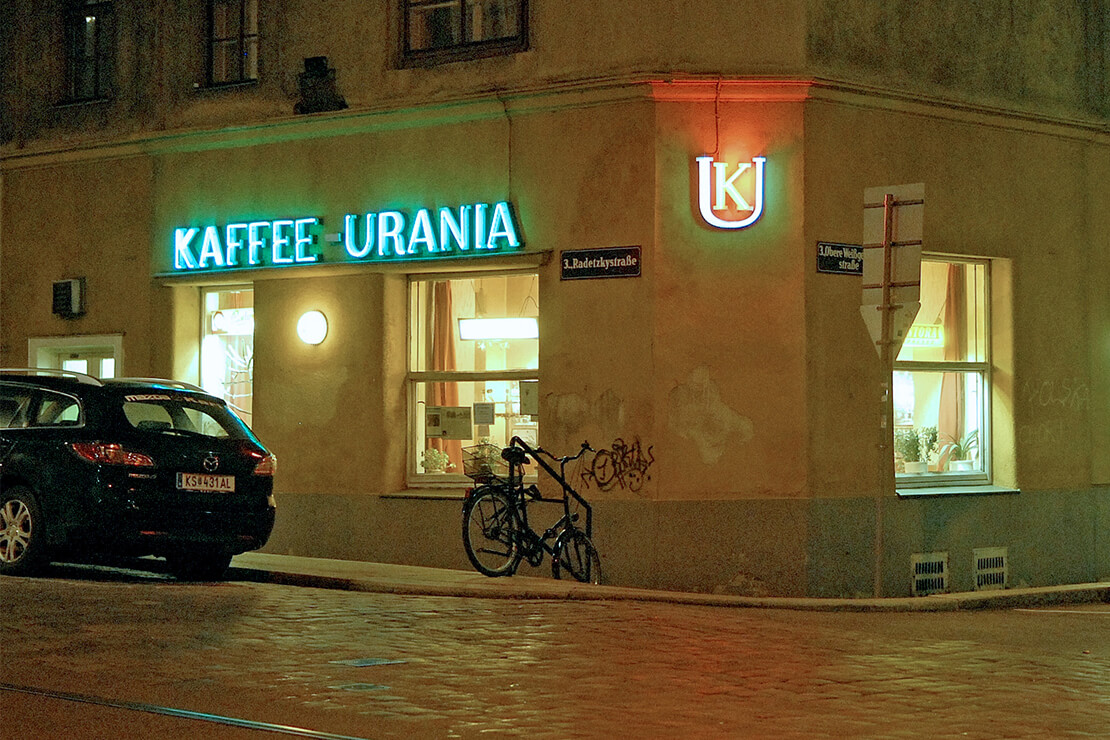 Kaffee, 2012, © WienWiki / Vindobohann
Kaffee, 2012, © WienWiki / Vindobohann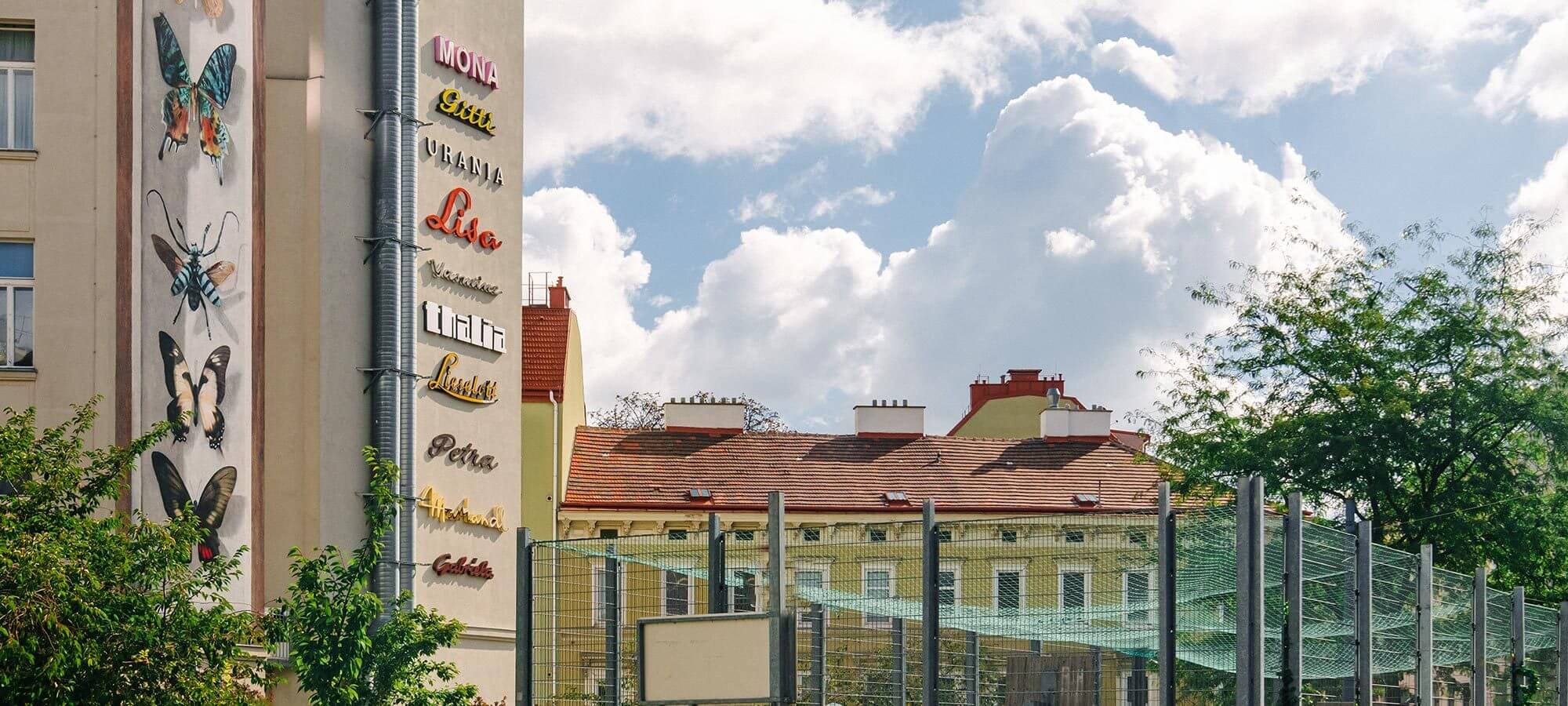 The “female name wall” in the 6th district with the second part of the inscription of the Café Urania, © Klaus Pichler
The “female name wall” in the 6th district with the second part of the inscription of the Café Urania, © Klaus Pichler
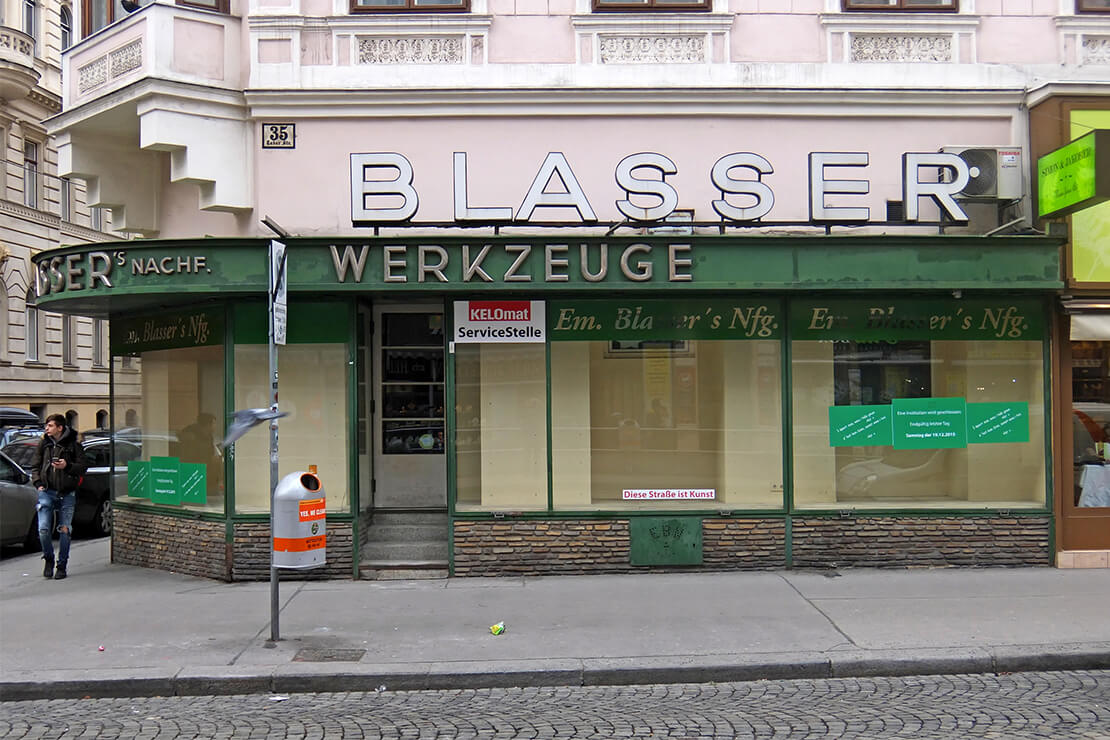 Metalle, © Stadtschrift
Metalle, © StadtschriftMetalle
2., Taborstraße 35Dismantled January 15, 2016
This inscription comes from the immediate vicinity of the wall exhibition. The business, founded in 1836, had three main pillars: Towards Tabor Street you could buy hardware, screws and nails by the piece. In Große Pfarrgasse was the department for household goods with exotic items such as honey dispensers and electric bread knives. Those who wanted to have their pressure cooker checked for safety were in the right place at Blasser’s KELOmat service point. In addition, “Blasser” was also a veteran of the Austrian water sports market. Boat fittings, lines and ropes were available opposite in the Große Pfarrgasse. Already in 1905 Ernst Bathelt appeared as Emmerich Blasser’s successor. The chrome letters could also date from this time. At the end of the 1970s Ing. Peter Hahn took over the business. The last owner was Herbert Felfernigg from 2004 on, a proud, traditional shopkeeper.
Information about the projects: www.stadtschrift.at

